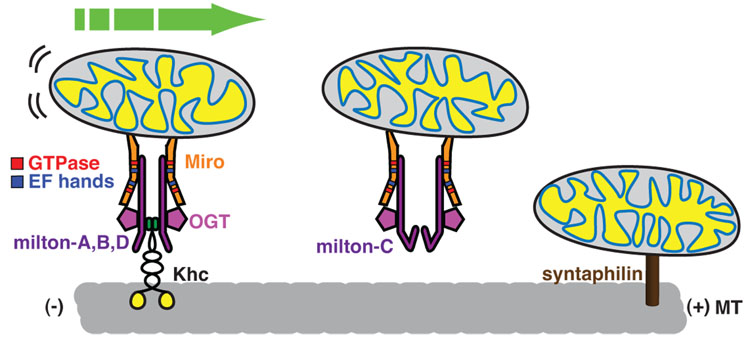Figure 4. Mitochondria on the move.
The KHC/milton/Miro complex is one of the best-defined motor/adaptor/cargo complexes. The association of milton splice isoforms that allow for binding to KHC (milton-A, B or D) links the motor with the mitochondrial membrane protein, Miro. In the presence of milton-C, miro and mitochondria do not associate with KHC, perhaps allowing for a competitive pathway to stop mitochondria when they reach a destination of high milton-C expression. Miro has GTPase domains as well as EF hands that may allow it to differentially bind to the Milton/KHC complex to link mitochondria to a microtubule transport pathway. Milton binds to and is glycosylated by O-GlcNAc transferase (OGT) binds. Glycosylation of milton has an unknown function but may serve as an additional signal links the metabolism of the cell with regulation of mitochondrial transport. Recent identification of a synaptic protein, synaptophilin, critical for the docking of mitochondria by linking it directly to microtubules adds a new layer of possibilities to how the motility of mitochondria are controlled in neurons.

